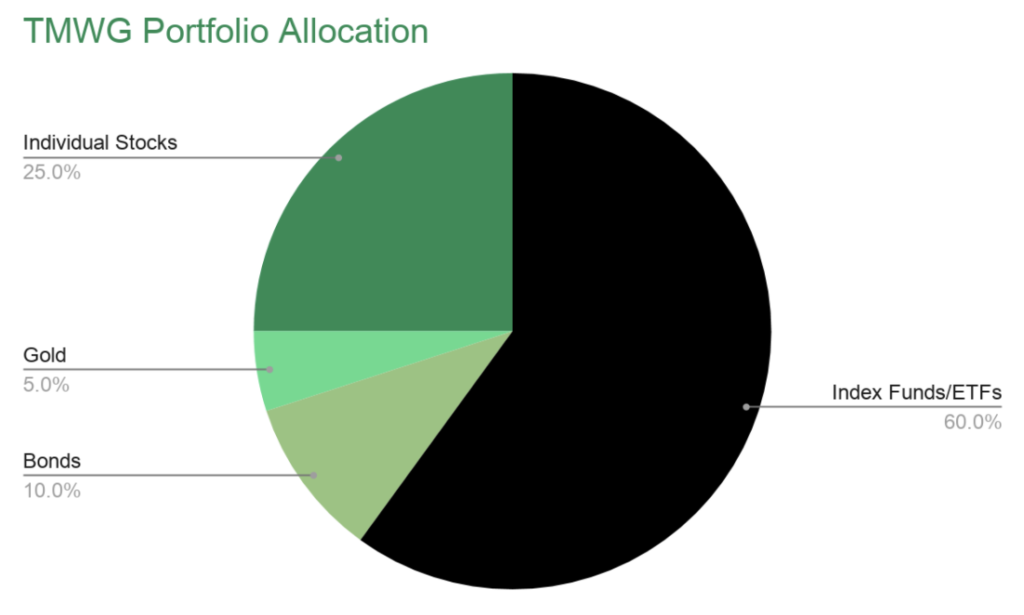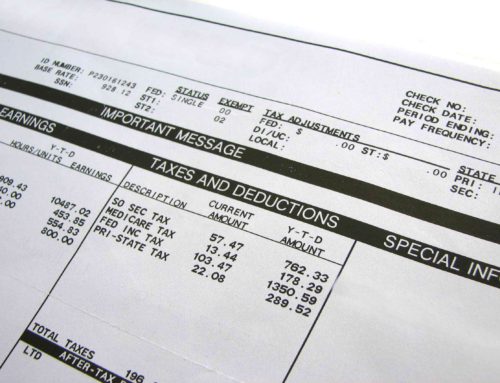There’s nothing like a transition (or a pending transition) to spark action. The end of the calendar year is one such popular transition. This is when many people start thinking about “getting their life right” for the next year. Though I don’t really take that dramatic of an approach to it, I do think the end of the year serves as a great opportunity for me to get some things in order and set myself up for financial success in the following year. Not only does it work symbolically (i.e. closing out the year), it also works practically since the end of the year is typically slower at work and I’ve got several days off to get personal things done. So I thought I’d share with you my end of year financial checklist.
Money Roundup
This is where I like to track my net worth. If you read this post, recall your net worth is adding up all your assets and subtracting all of your debts. In other words, what-do-you-have minus what-do-you-owe. What’s left is your net worth. This only takes me a few minutes because I use tools to constantly track my net worth. I talk about how to set this up in the link above. However, if you haven’t set this up, this exercise could take you a couple of hours. But it’s definitely worth the time. It’s really difficult to know if you’re progressing if you don’t have a baseline of where you’re starting from.
Trim the Fat
Once you have your picture of where you are, you can start to look at opportunities to optimize. One of the simplest ways to do this is to look at where you’re spending and get rid of what you don’t need. Start with subscriptions. Many businesses have moved to subscription based models. It’s great for them because it means predictable, recurring revenue and it can also be great for us, as the consumer, because it means we’re always getting the most updated service/product. However, sometimes it’s easy to forget about some of those subscriptions we signed up for. Maybe you just wanted a free trial of something or maybe you signed up for something and then moved or something else changed in your life where that service is no longer useful. Take some time to go through your bank and credit card statements for the last month and identify any services or subscriptions that you no longer need. In conducting this exercise, I discovered a gym membership we were still paying for (even though we hadn’t been since the pandemic started), a legal service we weren’t using and recurring charges from Amazon Web Services from a free trial that had expired months earlier. Aside from the gym membership, which I swore we’d cancelled, the other items were only a few dollars, but still no need to be paying for something that’s not being used. In addition to completely unused services, I look for underused services as well. For example, we had a subscription to Sling TV, but realized one of the primary channels that we’d signed up for was no longer on Sling so there was more value in switching to another service. We’re giving YouTube TV a try. It’s only been about a week, but so far I’m a fan.
Top Off Retirement Contributions
Have you taken full advantage of your tax-advantaged retirement/savings accounts this year? If not, now’s the time! Technically, for IRAs, you can make contributions for the current tax year after year end. For example, if you haven’t reached your 2020 IRA contribution limit, you have until April 15, 2021 to catch up. However, I like to wrap things up and start fresh at the beginning of the year whenever possible. Here are the accounts I’m reviewing along with their contribution limits. Wherever I’m not at the max, I’m trying to top them off. I’m not fully succeeding in all cases, but still trying nonetheless. Why? Because best case, as in the 401(k), that’s free matching money from my employer that I’d be missing out on if I didn’t max it. Next best case, it’s an opportunity to put money away in a tax-advantaged vehicle for later. I’m effectively paying myself instead of paying extra in taxes (you may have to go into landscape mode or scroll to the right on mobile devices to see the whole table).
| Account | 2020 Max Contribution | Additional allowance if over age 50 | Comment |
|---|---|---|---|
| 401(k)/403(b) | $19,500 | $6,500 | If your employer does a match, it’s extra important to contribute at least enough to get the full match. |
| IRA (Traditional and/or Roth) | $6,000 | $1,000 | Remember, these are individual retirement accounts so if you’re married, you can each have them. If you have multiple IRAs, the max contribution allowed per individual is the total contribution across the accounts. For example, the sum of your contributions to your traditional IRA and your Roth IRA cannot exceed $6,000. |
| HSA | $3,550 ($7,100 for family) | $1,000 (if over age 55) | |
| 529 | $8,000* (for Georgia, but see my comments) | I added an asterisk because this one’s a little tricky. There is no maximum annual contribution, but instead a total account contribution max. For Georgia for example, the maximum contribution allowed per beneficiary is $235,000. I said $8,000 because that’s the max state tax deduction a couple filing jointly can claim. Therefore, $8,000 is the max annual contribution target I set for myself. | |
| After tax 401(k) | $27,750 | My employer offers an option for after tax 401(k) contributions that can be automatically rolled over to a Roth 401(k). This is another opportunity for tax advantaged savings because the money in this account grows and can be withdrawn tax free. |
Rebalance Portfolios
I like to have a lightweight strategy for my investments. Full disclosure, I’m not an investing guru or stock market champ or any other title that suggests I’m doing anything other than keeping it simple. I stick to index funds/ETFs, bonds, gold, and a few individual stocks. Please keep in mind that this is MY strategy. I’m not advising anyone to follow it and if you choose to do so and make/lose money, either way my name is Bennett. Here’s a rough estimate of my investment allocations:

You can see the vast majority is in index funds/ETFs, which are pre-bundled groups of a variety of stocks. Why do I like these?
1) It’s easy. Instead of trying to pick which individual stocks are going to do well, I just buy a big basket of a bunch of them. Historically, the market indexes have consistently outperformed individual stock pickers. This includes the pros. VTSAX (tracks the total stock market), SWPXX (tracks the S&P 500), and QQQ (tracks the Nasdaq top 100) are some that I like. Again, not advice, just sharing what I’m doing.
2) I like the risk/return equation. Historically, there’s been relatively low risk for relatively good returns. However, returns are not guaranteed. Anytime you invest, you’re taking a risk.
3) They’re comparatively cheap. The expense ratios on index funds/ETF’s are typically much lower than traditional mutual funds.
You’ll also notice a decent chunk in individual stocks. This is mostly a carryover from a previous life where I thought I knew how to pick stocks. I actually did make some good picks in the past, but I also made some really bad ones (Remember Circuit City?). What’s left are the ones that I consider “holds” (for now anyway). These are either blue chips, like Procter & Gamble, big tech, like Microsoft, Google, Apple or long shots where I think I might’ve found a sleeper, but I understand the risk and won’t be devastated if it ends up being a bust.
Bringing this back around to the point. At the end of the year, I like to take a look at the allocations and confirm whether that’s where I want to be or whether I want to sell/buy and shuffle some things around.
Spend LPFSA and Dependent Care Dollars
During open enrollment for benefits, I elected to have some pre-tax money put aside in Flexible Spending Accounts. One of those accounts is a Limited Purpose Flexible Spending Account (LPFSA) and the other is a Dependent Care Flexible Spending Account (DCFSA). The LPFSA can be used for eligible dental and vision care expenses. I know we have bad eyes in this house so we’re buying contacts and/or glasses every year. By putting pre-tax money into the LPFSA, I can use that account to reimburse myself for those expenses. It’s basically like getting a 25% discount on something I know I’ll be buying anyway. The 25% is a ballpark estimate based on our current tax bracket. Yours could be different, but the principle is the same. You will pay less with an LPFSA because you are using pre-tax money.
The same goes for the DCFSA. This can be used to pay for eligible child care expenses like daycare, after school care or babysitting. Again, expenses that we know we’re going to have anyway so it makes sense to effectively prepay for the services and take a discount on the backend. Why? Again, because the money is coming out pre-tax.
The important thing to remember about these accounts is that they are use-it-or-lose-it, meaning that the money that’s allocated to an LPFSA or a DCFSA has to be spent in that year. For obvious reasons (I’m looking at you Covid-19), the deadline for 2020 spend has been extended to March 15, 2021. After the deadline, all bets are off. The money has to be spent by the spend deadline and claims have to be made by the claim deadline. Otherwise, that money is gone forever. Take it from someone who sat angrily on the phone with my plan administrator for over an hour one year when I failed to make my claim in time. There was no love.
Make Charitable Contributions
I often say, “‘Tis best to give AND receive”. While I’m spending the time and effort to get our money right, we don’t want to neglect others who are less fortunate and causes that we’re passionate about. The end of the year is where we catch up on our giving. This year, my wife and I supported educational causes, including our alma maters, Howard University and Tennessee State University. We also made a donation to The Kindezi Schools, a cluster of charter schools in Atlanta. A bonus this year was that the schools all received matching gifts via various programs from my employer and an anonymous philanthropist.
Helping others is reason enough to give, but don’t ignore the potential tax benefits. Donations to organizations that have 501(c)(3) status, aka charitable organizations, are typically tax deductible. Be careful, though. Some donations are not really donations. I don’t let tax benefits drive our decisions on where to give, but I also don’t pass on the opportunity to take the deduction…and neither should you.
Make a Plan for the Following Year
Finally, I take some time to chart out our financial plan for the following year. For me, this means a few things. The first is creating a monthly expense tracking spreadsheet. Feel free to use the template I created to build your own. Additionally, I think about what our savings, investing and spending goals are and work backwards to create a plan to achieve those. For us, the big ticket items are a new real estate investment opportunity (more to come on that), maxing out our retirement accounts, ensuring a 6-month emergency cash reserve, some much needed home repairs, and some even more needed and loooong overdue vacation travel.
Creating the plan means first understanding how much money is required to meet the goal. Next, determine when we want to reach that goal. Then either work backwards to see how much we need to save each month to get to the goal or create a timeline for replenishing any upfront spend. For example, if we put a large expense on a credit card (to get the points), then pull money from savings to pay off the credit card immediately, what’s our plan/timeline to replenish the savings? Do we need to shuffle any expenses? Do we need to cut costs somewhere? These are examples of the components of the plan.
What’s on your year end checklist?







